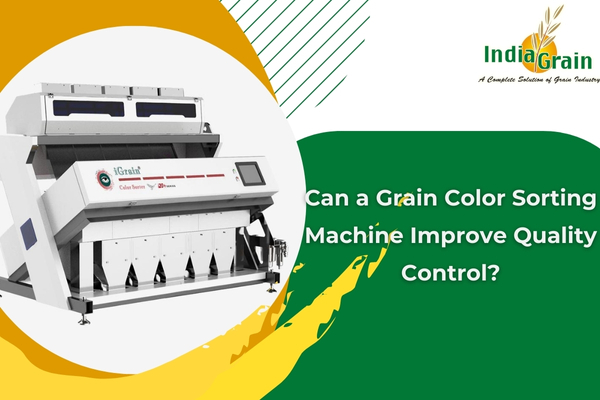
Blog-details
Posted By : Anil Yadav
Blog Date : 8th April, 2024
Can a Grain Color Sorting Machine Improve Quality Control?
In the world of grain processing, quality control is paramount. Every batch of grains must meet stringent standards for purity, consistency, and appearance to ensure consumer satisfaction and maintain market competitiveness. Traditional methods of quality control rely heavily on manual inspection, which can be time-consuming, subjective, and prone to human error. However, with advancements in technology, grain color sorting machines have emerged as a game-changer in the quest for superior quality control. But can a grain color sorting machine truly improve quality control? Let's explore.
Understanding Grain Color Sorting Machines:
Grain color sorting machines utilize advanced optical technology to identify and separate grains based on color variations. These machines are equipped with high-resolution cameras and sophisticated image processing software that analyze each grain in real-time. By detecting subtle differences in color, shape, size, and texture, the sorting machine can accurately classify grains and remove defective or foreign particles from the product stream.
Benefits of Grain Color Sorting Machines for Quality Control:
Enhanced Accuracy:
Unlike manual inspection, which is prone to human error, grain color sorting machines offer unparalleled accuracy and consistency in quality control. These machines can detect defects and impurities with precision, ensuring that only high-quality grains make it to the final product.
Improved Efficiency:
Grain color sorting machines can process grains at high speeds, significantly increasing throughput and productivity compared to manual sorting methods. This improved efficiency not only saves time but also reduces labor costs and minimizes production downtime.
Selective Sorting:
One of the key advantages of grain color sorting machines is their ability to selectively sort grains based on specific criteria. Whether it's removing discolored grains, foreign materials, or damaged kernels, these machines can be programmed to target and eliminate any undesirable elements from the product stream.
Enhanced Food Safety:
By removing foreign materials and contaminants, grain color sorting machines contribute to enhanced food safety and hygiene. This is particularly important in industries such as rice milling and flour milling, where purity and cleanliness are essential to prevent contamination and ensure compliance with food safety regulations.
Optimized Product Quality:
With their ability to precisely sort grains based on color, grain color sorting machines help optimize product quality and consistency. By eliminating defective grains and foreign particles, these machines produce grains of uniform size, shape, and appearance, resulting in higher-quality end products that meet consumer expectations.
Reduced Waste:
By efficiently removing defective grains and foreign materials from the production stream, grain color sorting machines help minimize waste and maximize yield. This not only reduces production costs but also contributes to environmental sustainability by minimizing the disposal of unusable materials.
Customizable Settings:
Grain color sorting machines offer customizable settings and parameters that allow operators to tailor the sorting process to their specific requirements. Whether it's adjusting sensitivity levels, setting sorting criteria, or fine-tuning machine performance, operators have the flexibility to optimize sorting results according to their needs. .
Conclusion:
In conclusion, grain color sorting machines offer a host of benefits for quality control in grain processing operations. From enhanced accuracy and efficiency to improved food safety and optimized product quality, these machines are revolutionizing the way grains are sorted and processed. By investing in a grain color sorting machine, grain processors can ensure superior quality control, minimize waste, and maintain a competitive edge in the market.
Frequently Asked Questions
Grain color sorting machines utilize advanced optical technology, including high-resolution cameras and image processing software, to analyze each grain in real-time. They detect color variations, shape, size, and texture to accurately classify grains and remove defective or foreign particles from the product stream.
Grain color sorting machines can sort a wide range of grains, including rice, wheat, maize, barley, pulses, and beans, among others. They are versatile machines capable of handling various grain types and sizes.
Grain color sorting machines are highly effective at removing visible impurities such as discolored grains, foreign materials, and damaged kernels. However, they may not be able to detect microscopic impurities or contaminants that are not visible to the naked eye.
Grain color sorting machines offer unparalleled accuracy and consistency in defect detection. They can detect defects with precision, ensuring that only high-quality grains make it to the final product. However, the accuracy may vary depending on factors such as machine settings, grain type, and operating conditions.
